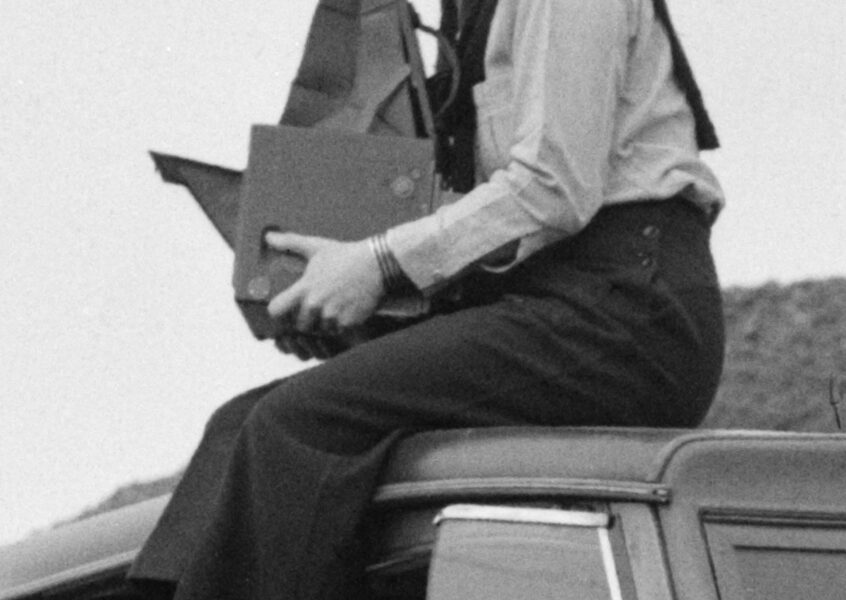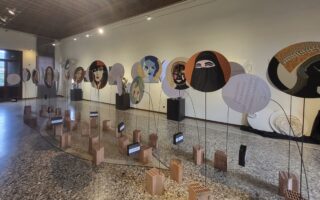Settin Magda and Scuro Sara
Dorothea Lange was a famous American photographer, best known for her work during the Great Depression that hit the United States between 1929 and 1941.
Childhood and youth
Born on 26 May 1895 in Hoboken, New Jersey, Dorothea had a difficult childhood, marked by polio, which she contracted at the age of seven and which left her with a permanently lame leg. Despite this challenge, she developed a great interest in art at an early age and began taking photographs at the age of 18. She was then abandoned by her father, who brought her to take her mother’s surname and cut him out of her life completely.
The beginning of her photographic career
After completing her studies in New York, she left with a friend to travel from NY to San Francisco, where they were robbed and left with nothing. It was there that she met her future husband.
Later she opened a studio that she ran for 10 to 15 years, specialising in portraits of the wealthy with her first husband, the painter Manyard Dixon, and discovering her ability to interact with people.
The economic crisis that followed the Wall Street Crash forced her to close her studio. She began to wander the streets, capturing moments of everyday life without filters, just as they were.
The beginning of her fame and work
Dorothea Lange became famous for her documentary photography during the Great Depression of the 1930s, most notably the iconic “Migrant Mother”, which captured a struggling family.
Dorothea worked for the Farm Security Administration (FSA), documenting the lives of those who were affected the most by the crisis and helping to raise public and government awareness of the hardships faced by farming families.
During the Second World War, she was commissioned by the government to document the internment of Japanese Americans, highlighting the injustice of the practice.
After divorcing her first husband, she remarried in 1935 to agricultural economist Paul Schuster Taylor, with whom she collaborated extensively, both professionally and personally.
She received many awards for her role in documentary photography, and after her death on 11 October 1965, her cultural impact and artistic legacy continued to be recognised, thus influencing future generations of artists.
New Deal, Roosevelt and the Photography project
During the New Deal, President Roosevelt established the Department of Agriculture and hired 14 photographers to document life at the time.
Roy Stryker, a University of California professor and economic expert, led that group. He gave the photographers several guidelines to show the reality of the impact of the crisis. The photos had to be portraits, interiors, agricultural work, homes and hand details, and the photos couldn’t be altered.
Dorothea Lange was hired thanks to Paul Taylor, who noticed her work and years later the two married.
For her work, Lange used very compact cameras that could still capture a lot of details.
Lange and Taylor worked together a lot, as he wrote the captions to her art, creating work that was very heartfelt from both of them. The project wasn’t casual, but it was meant to show exactly “the other America”, the one beyond the myth of the American dream.
Her photography
Dorothea was fascinated by lines and large groups of people, and was keen on social and human dynamics. Her photographs stand out for their creative use of perspective changes, as for instance in the image where she captures the queue of people waiting for unemployment benefits inside a post office. She climbed up to get that shot.
Of the 14 photographers, she was the only one who could print and manipulate her own negatives.
While wandering the streets of San Francisco, she often found herself in uncontrollable situations where elements she didn’t want to portray, such as corners of newspapers or a hand, would enter “her” scene.
However, that didn’t stop her from achieving her goal, which was to represent the everyday lifestyle and the reality.
“Bad as it is, the world is potentially full of good photographs. But to be good, photographs have to be full of the world.”- Dorothea Lange
Migration to California
At the time of the New Deal, the central states of the United States were experiencing a social and climatic crisis, characterised by long periods of drought that rendered the land unfit for cultivation as it became increasingly desert-like.
The work on the land, monopolised by individual workers using tractors, brought agriculture to a semi-intensive level, thus making the land even poorer. Besides forests were cut down, causing sandstorms that worsened the land situation.
Because of these difficulties, many people chose to migrate to California in search of better opportunities, bringing with them overpopulation, lower wages and less housing. As a result, jungles grew up around large estates, with serious consequences for the quality of life and social stability of the entire region as well.
This historic period is documented in many forms of art, and Dorothea Lange is undoubtedly one of the leading exponents of documentary photography. Her work is still being used today, and many of her photographs are on display at the MoMA. The “Migrant Mother” is one of her most famous works, and the image has become such a powerful symbol of the American Great Depression.
“Photography takes an instant out of time, altering life by holding it still.” – Dorothea Lange




